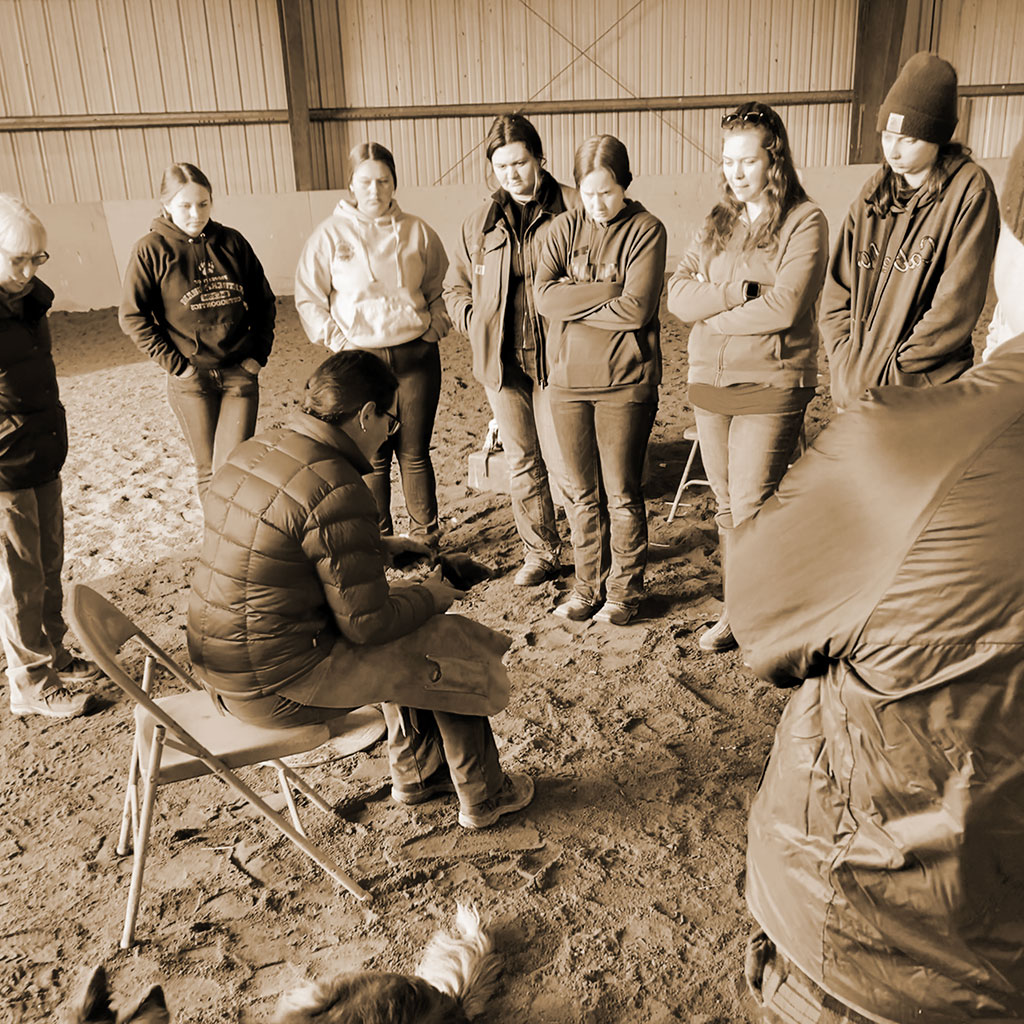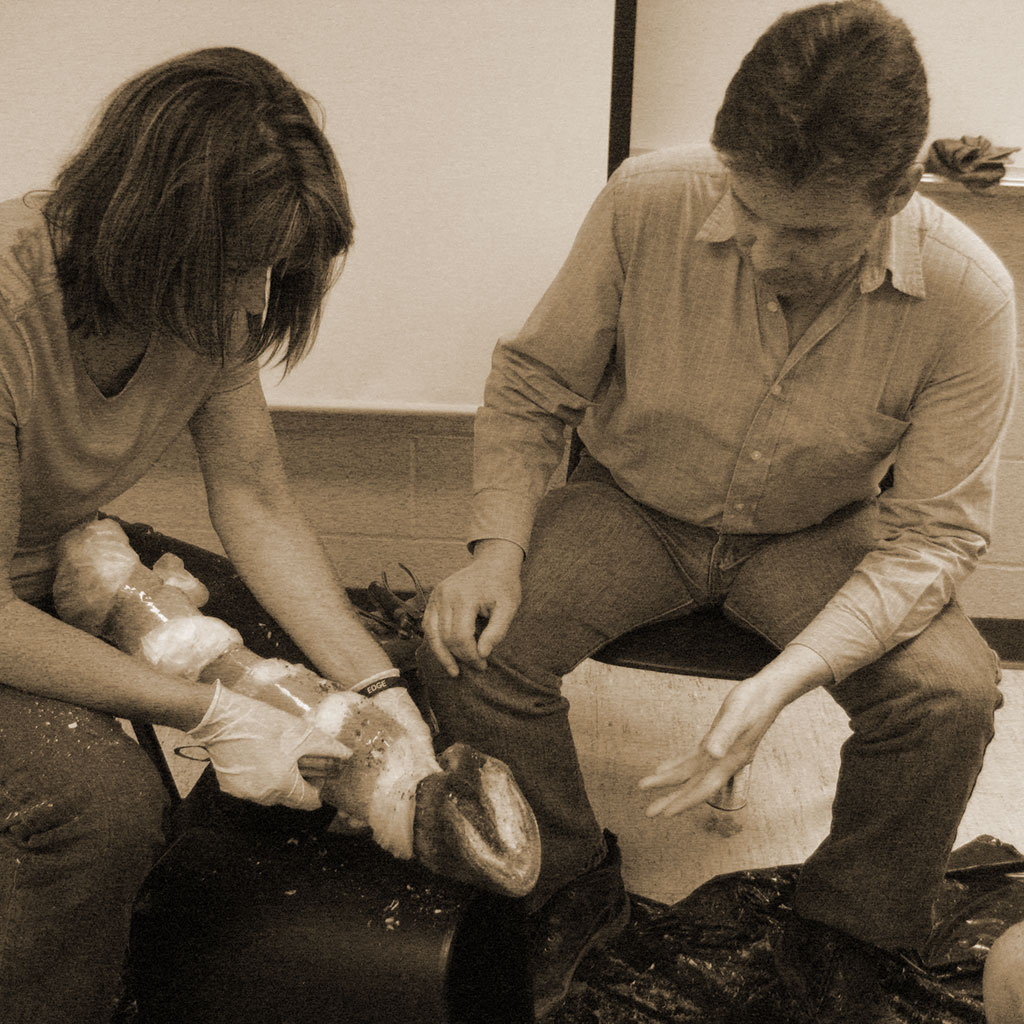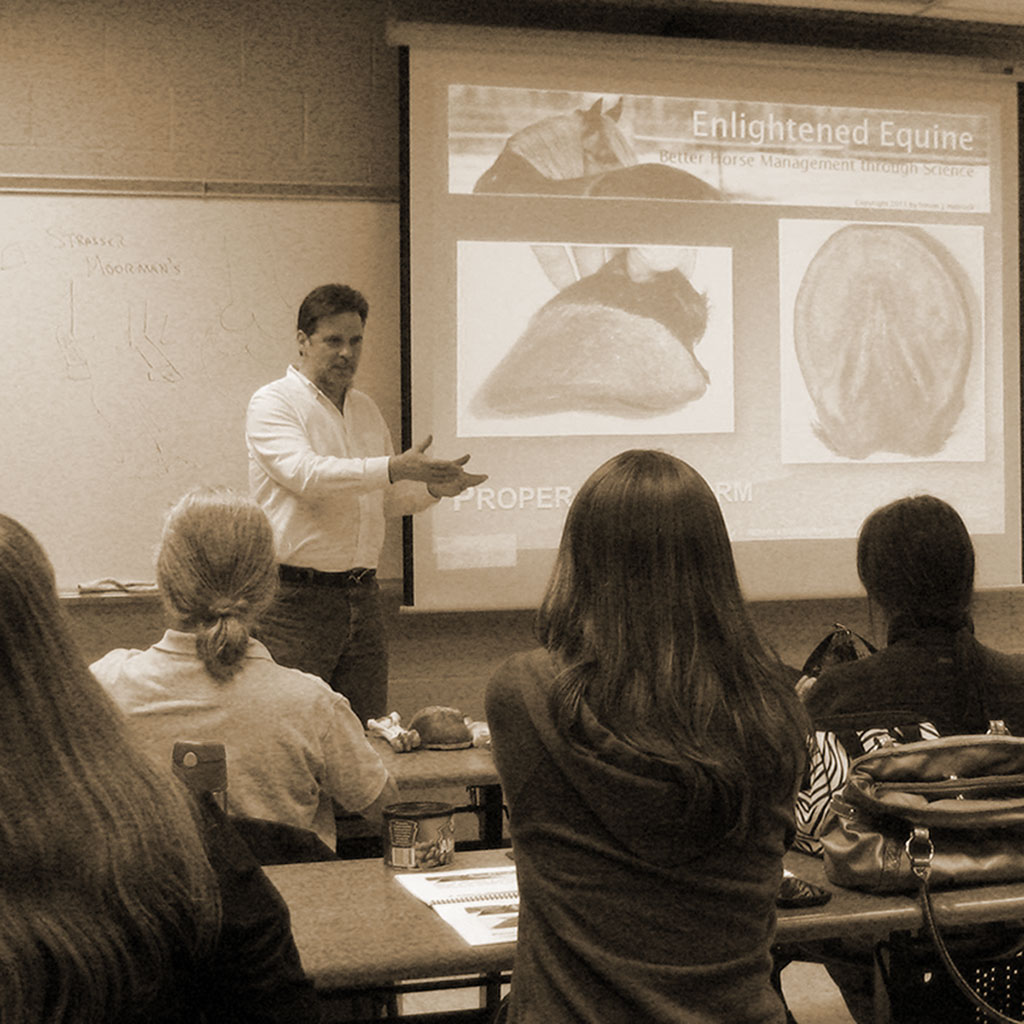


Sources of science-based, factual information are extremely difficult to come by in the equine world. This, we believe, is due in no small measure to the serious lack of hoof care education in the veterinary community (not their fault!), further compounded by the fact that most, if not all, of the farrier schools place far more emphasis on the metalworking aspects of their profession rather than on what matters to the horse. To quote the well-known equine anatomist and educator Dr. Deb Bennett –
“What concerns me – and it ought to be of concern to every horse owner – is that a person with little or no training in physical assessment; no knowledge of the development or physiology of body tissues; a vague or incorrect concept of what is normal in stance; who is unprepared to relate the principles of physics or biomechanics to his work; who has never been taught how to develop a long-term treatment plan, or even that this would be of importance – THIS person is going to be asked to design, manufacture, and apply an orthotic device (a horseshoe) to my horse’s limb….When the farrier does not know why to proceed, he cannot know how to proceed….if good work happens, it happens by chance.”
– Principles of Equine Orthopedics: Stance and Biomechanics for Every Horse Owner
In an effort to combat this overabundance of misinformation and help get horse owners and their horses “on track,” we’ve designed a one-day Workshop to introduce horse owners to the principles and practices of science-based, natural hoof care. The Workshop consists of two sections: a four-hour morning theory period consisting of lectures with accompanying images and videos; and a four-hour afternoon trimming practicum covering tools & tool use, a step-by-step introduction to proper trimming, a clinician-guided cadaver leg trimming experience, and a demonstration trim on a live horse. Students may instead elect to take the Theory Only option at a reduced cost, which does not include access to the afternoon sessions.
The intent of this Workshop is to educate horse owners about what does – and does not – constitute proper hoof care so they are better-equipped to identify it.
Prices for these one-day Workshops are $300/person, plus cadaver hoof costs, with the half-day Theory Only option for $100. There is a minimum required number of students per Workshop to cover our travel expenses, and is location dependent. If you are interested in hosting one of our An Introduction to Hoof Care Workshops, please see the Hosting Requirements section on the FAQs page for details.
Here’s a brief description of each of the Workshop classes –
The Illusion of Knowledge: Sorting Fact from Fiction (30 min.)
The horse hoof world is chock-full of both scientifically-unsound information and self-proclaimed “experts” with no credentials to support their assertions. We’ll discuss ways to help the horse owner make sense of it all.
Causes & Care of Common Hoof Pathologies (60 min.)
Problems can arise from a number of sources, both directly related to, and unrelated to, hoof trimming. A look at the most typical problems encountered by the horse owner, and how best to resolve them.
Lessons from the Feral Horse & the Natural Trim (90 min.)
Understanding where the horse comes from and how the environment affects hoof function and form helps us come to terms with what can – and cannot – work for hoof care, and why. This understanding forms the basis for true natural hoof care.
The Trim Process* (60 min.)
An overview of the tools, techniques, and goals of the natural trimming process, and the significance of each part of the process. A demonstration trim will be performed by one of the clinicians.
Optimal Hoof Function & Form (30 min.)
Hoof form is the product of hoof function, not the other way round; therefore, one cannot successfully force optimal form on a sub-optimally-functioning hoof. We’ll examine this cause-and-effect relationship, and the forces behind, and physical characteristics of, the properly-functioning hoof.
Cadaver Hoof Trimming* (120 min.)
A clinician-guided cadaver hoof trimming experience for students. It is recommended that each student purchase one to two cadaver legs for trimming, depending on his/her prior experience.
Factors Affecting Hoof Health (30 min.)
Although the point of departure for healthy hooves is always a proper trim, the hoof cannot attain a truly healthy state without control over other diet, management, and environmental factors that affects hoof function and form.
Live Horse Hoof Trimming Demo/Question & Answer Period* (60 min.)
The clinicians will perform a demonstration trim on a horse while providing the opportunity for students to ask either general questions or questions specific to his/her own situation.
*Not available to Theory Only students
